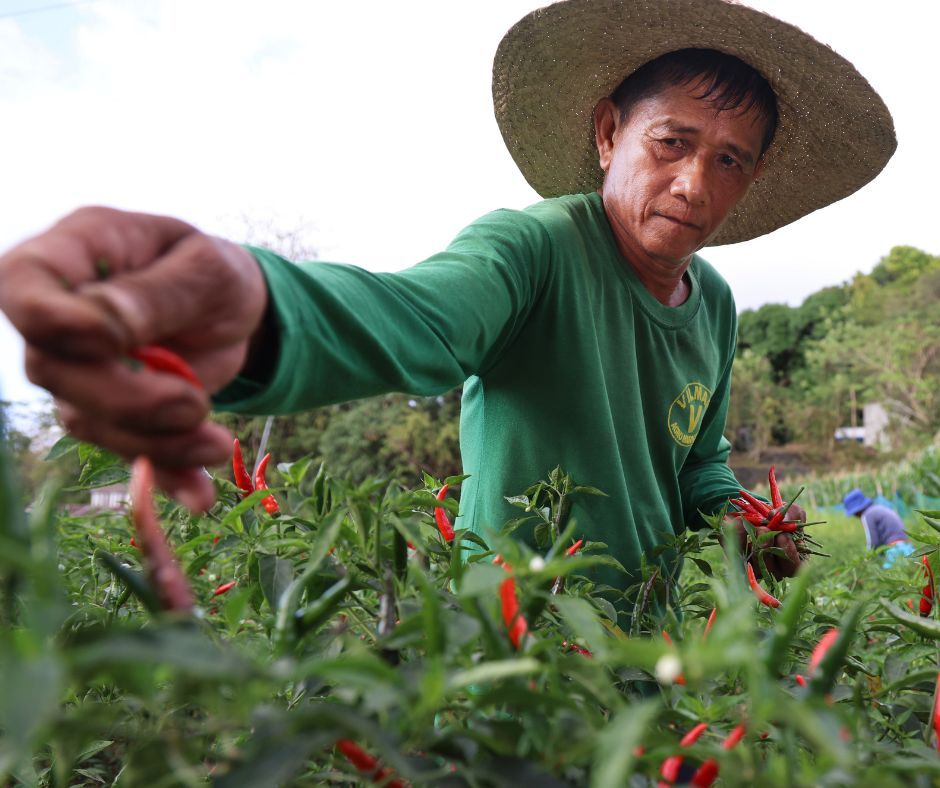What Filipino farmers need to know about crop insurance

For Filipino farmers, calamities such as typhoons, floods, pests, and diseases are harsh realities that threaten their livelihoods. This makes it crucial for them to have protection against these unforeseen disasters.
This is where the Philippine Crop Insurance Corporation (PCIC) steps in. Established in 1978, PCIC offers crop insurance to safeguard farmers from losses caused by natural disasters.
However, despite the importance of this service, many farmers are still unaware of how PCIC works or how they can benefit from it. What do farmers need to know about crop insurance?
WHAT IS PCIC?
The PCIC is a government-owned and controlled corporation (GOCC) under the Department of Agriculture (DA). It aims to help farmers recover from losses caused by unavoidable disasters. PCIC provides insurance coverage for a wide range of crops, including rice, corn, high-value commercial crops, and even livestock. Additionally, it offers insurance for farm equipment like tractors and fishing boats, as well as life insurance for farmers.
WHY ARE MANY FARMERS UNINSURED?
One of the main reasons many farmers are not insured by PCIC is a lack of awareness. According to a study led by Dr. Felino P. Lansigan for the Philippine Institute for Development Studies, a majority of farmers interviewed were unaware of crop insurance. Some farmers enrolled by the government in PCIC didn’t even know they were insured. Although many farmers recognize the importance of crop insurance, they are often hesitant to pay the premiums.
A World Bank study also found that in remote areas, farmers have limited knowledge about how to apply for insurance or are unaware of the benefits PCIC offers. The process of enrolling in insurance can be daunting, particularly when necessary documents are hard to obtain.
Moreover, the insurance coverage offered by PCIC may not always be sufficient to fully cover production costs. This means that even insured farmers may still be underinsured. Delays in payouts can also slow down recovery efforts after a disaster, leaving farmers in financial distress.

KEY INFORMATION FOR FARMERS
It's important for farmers to understand the value of enrolling in PCIC. According to Ferdinand Evasco, a PCIC underwriter in Laguna, registration is typically handled through local government units (LGUs) or accredited lending institutions where farmers apply for loans.
Through the Registry System for Basic Sectors in Agriculture (RSBSA), farmers registered with the Department of Agriculture are eligible for a 100% premium subsidy. This registry is vital because only those listed in RSBSA are eligible for government benefits such as free seeds, fertilizer, farming tools, financial assistance, livestock, and insurance.
HOW TO AVAIL OF CROP INSURANCE
To avail of insurance from the Philippine Crop Insurance Corporation, farmers should follow these steps:
Register or Apply – Farmers should visit their nearest PCIC office, LGU, or accredited lending institution to register and apply for crop insurance. Farmers’ cooperatives or associations can also assist with the registration process.
Prepare Necessary Documents – Farmers may need to provide documents like proof of land ownership or lease agreement, farm plans or records, and identification documents like a valid ID. Ensuring that these documents are complete will help avoid delays in the process.
Choose an Insurance Package – Farmers should specify their crops and select the appropriate insurance package. The coverage may vary depending on the type of crop and the desired level of protection. Farmers can also seek advice from PCIC to choose the best option for their farms.
Pay the Premium – If the insurance is government-subsidized, farmers will only need to pay the portion of the premium not covered by the government. For other types of insurance, such as high-value commercial crops, farmers will need to pay a higher premium depending on the chosen package.
Sign the Insurance Policy – After submitting the documents and making the payment, farmers will receive an insurance policy from PCIC. It is important to read and understand the policy details before signing. This document will serve as the basis for claims in the event of a disaster.
HOW TO FILE CLAIMS
If a disaster occurs, farmers should report it immediately to PCIC or the LGU where they registered their insurance. It’s essential to follow the correct process when filing claims to receive the insurance payout.
STEPS TO REPORT LOSS
Report the Damage Promptly – Farmers should notify their nearest PCIC office or LGU as soon as their crops or livestock are damaged.
Submit a Notice of Loss – Farmers must file a Notice of Loss (NL) within 7-15 days of the incident.
Inspection and Adjustment – PCIC will send an adjuster to inspect the damage. Additional documents such as photos or receipts may be required.
Compensation Calculation – PCIC will calculate the payout based on the insurance policy’s coverage. For example, if crops are close to harvest and are destroyed by a typhoon, the farmer could receive 100% of the insured amount. The same applies to livestock. The older and larger the animals, the higher the payout.
Receiving the Payout – PCIC will issue the payout through a check or direct bank transfer.
COMMON ISSUES
Delays in claims processing can occur, especially when many farmers file claims simultaneously or if documents are incomplete. There may also be differences between the expected and actual payout due to the adjustment process, as insurance is based on the indemnity principle—meaning only the actual losses will be compensated.

ADDITIONAL TIPS FOR FARMERS
Farmers should ensure that all information in their Notice of Loss is accurate and complete. Keeping a detailed record of all farming activities and following up with PCIC can also help expedite the claims process.
By staying informed and taking proactive steps, farmers can better protect their livelihoods from the risks posed by natural disasters and other unforeseen events. Proper use of crop insurance is an essential tool for a resilient agricultural future.